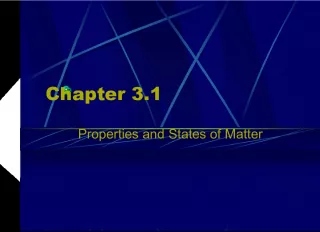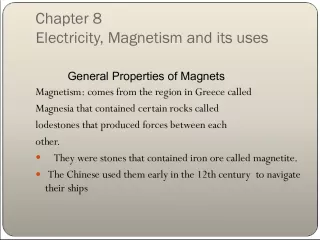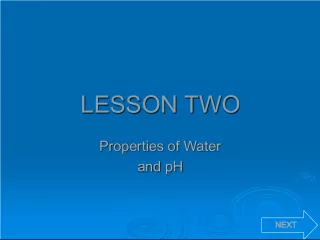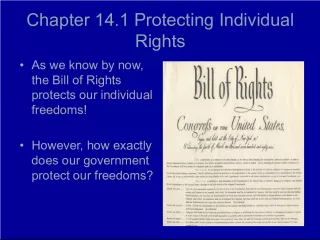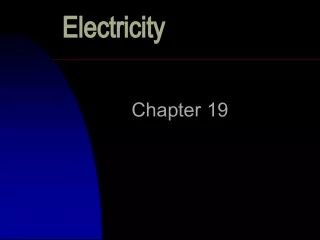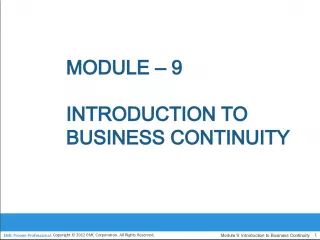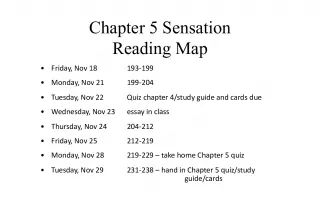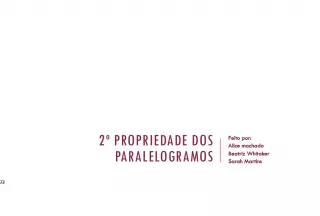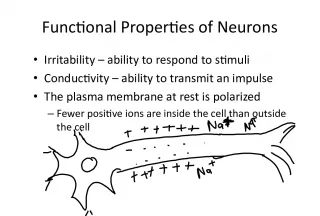Chapter 14 Solutions: The Dissolution Process and Colligative Properties


This chapter discusses the process of dissolution and its effects on the solubility of substances, as well as colligative properties such as lowering of vapor pressure and osmotic pressure. It also covers methods for determining molecular weight through freezing point depression and boiling point elevation.
- Uploaded on | 0 Views
-
 clayschultz
clayschultz
About Chapter 14 Solutions: The Dissolution Process and Colligative Properties
PowerPoint presentation about 'Chapter 14 Solutions: The Dissolution Process and Colligative Properties'. This presentation describes the topic on This chapter discusses the process of dissolution and its effects on the solubility of substances, as well as colligative properties such as lowering of vapor pressure and osmotic pressure. It also covers methods for determining molecular weight through freezing point depression and boiling point elevation.. The key topics included in this slideshow are solubility, colligative properties, vapor pressure, molecular weight, osmotic pressure,. Download this presentation absolutely free.
Presentation Transcript
1. 1 CHAPTER 14 Solutions CHAPTER 14 Solutions The Dissolution Process 1 . Effect of Temperature on Solubility 2. Molality and Mole Fraction Colligative Properties of Solutions 3. Lowering of Vapor Pressure and Raoults Law 4. Fractional Distillation 5. Boiling Point Elevation 6 Freezing Point Depression 7. Determination of Molecular Weight by Freezing Point Depression or Boiling Point Elevation 8. Colligative Properties and Dissociation of Electrolytes 9. Osmotic Pressure
2. 2 Effect of Temperature on Solubility Effect of Temperature on Solubility LeChateliers Principle When stress is applied to a system at equilibrium, the system responds in a way that best relieves the stress.
3. 3 Molality and Mole Fraction Molality and Mole Fraction Molality is a concentration unit based on the number of moles of solute per kilogram of solvent .
4. 4 Molality and Mole Fraction Molality and Mole Fraction Mole fraction is the number of moles of one component divided by the moles of all the components of the solution
5. 5 Colligative Properties of Solutions Colligative Properties of Solutions Colligative properties are properties of solutions that depend solely on the number of particles dissolved in the solution. Colligative properties do not depend on the kinds of particles dissolved. Colligative properties are a physical property of solutions.
6. 6 Colligative Properties of Solutions Colligative Properties of Solutions There are four common types of colligative properties: 1. Vapor pressure lowering 2. Freezing point depression 3. Boiling point elevation 4. Osmotic pressure
7. 7 Lowering of Vapor Pressure and Raoults Law Lowering of Vapor Pressure and Raoults Law Addition of a nonvolatile solute to a solution lowers the vapor pressure of the solution. The effect is simply due to fewer solvent molecules at the solutions surface. The solute molecules occupy some of the spaces that would normally be occupied by solvent. Raoults Law models this effect in ideal solutions.
8. 8 Lowering of Vapor Pressure and Raoults Law Lowering of Vapor Pressure and Raoults Law Derivation of Raoults Law .
9. 9 Lowering of Vapor Pressure and Raoults Law Lowering of Vapor Pressure and Raoults Law Lowering of vapor pressure, P solvent , is defined as:
10. 10 Lowering of Vapor Pressure and Raoults Law Lowering of Vapor Pressure and Raoults Law Remember that the sum of the mole fractions must equal 1. Thus X solvent + X solute = 1, which we can substitute into our expression.
11. 11 Fractional Distillation Fractional Distillation Distillation is a technique used to separate solutions that have two or more volatile components with differing boiling points. A simple distillation has a single distilling column. Simple distillations give reasonable separations. A fractional distillation gives increased separations because of the increased surface area. Commonly, glass beads or steel wool are inserted into the distilling column.
12. 12 Boiling Point Elevation Boiling Point Elevation Addition of a nonvolatile solute to a solution raises the boiling point of the solution above that of the pure solvent. This effect is because the solutions vapor pressure is lowered as described by Raoults law.
13. 13 Boiling Point Elevation Boiling Point Elevation Boiling point elevation relationship is:
14. 14 Boiling Point Elevation Boiling Point Elevation What is the normal boiling point of a 2.50 m glucose, C 6 H 12 O 6 , solution?
15. 15 Freezing Point Depression Freezing Point Depression Addition of a nonvolatile solute to a solution lowers the freezing point of the solution relative to the pure solvent.
16. 16 Freezing Point Depression Freezing Point Depression Relationship for freezing point depression is:
17. 17 Freezing Point Depression Freezing Point Depression Notice the similarity of the two relationships for freezing point depression and boiling point elevation. Fundamentally, freezing point depression and boiling point elevation are the same phenomenon. The only differences are the size of the effect which is reflected in the sizes of the constants, K f & K b .
18. 18 Freezing Point Depression Freezing Point Depression Calculate the freezing point of a 2.50 m aqueous glucose solution.
19. 19 Determination of Molecular Weight by Freezing Point Depression Determination of Molecular Weight by Freezing Point Depression The size of the freezing point depression depends on two things: 1. The size of the K f for a given solvent, which are well known. 2. And the molal concentration of the solution which depends on the number of moles of solute and the kg of solvent.
20. 20 A 37.0 g sample of a new covalent compound, a nonelectrolyte, was dissolved in 2.00 x 10 2 g of water. The resulting solution froze at - 5.58 o C. What is the molecular weight of the compound?
21. 21 Colligative Properties and Dissociation of Electrolytes Colligative Properties and Dissociation of Electrolytes Electrolytes have larger effects on boiling point elevation and freezing point depression than nonelectrolytes. This is because the number of particles released in solution is greater for electrolytes One mole of NaCl dissolves in water to produce two moles of aqueous ions: 1 mole of Na + and 1 mole of Cl - ions
22. 22 Colligative Properties and Dissociation of Electrolytes Colligative Properties and Dissociation of Electrolytes The vant Hoff factor , symbol i , is used to introduce this effect into the calculations. i is a measure of the extent of ionization or dissociation of the electrolyte in the solution.
23. 23 Colligative Properties and Dissociation of Electrolytes Colligative Properties and Dissociation of Electrolytes i has an ideal value of 2 for 1:1 electrolytes like NaCl, KI, LiBr, etc. i has an ideal value of 3 for 2:1 electrolytes like K 2 SO 4 , CaCl 2 , SrI 2 , etc.
24. 24 Osmotic Pressure Osmotic Pressure Osmosis is the net flow of a solvent between two solutions separated by a semipermeable membrane. The solvent passes from the lower concentration solution into the higher concentration solution. Examples of semipermeable membranes include: 1. cellophane and saran wrap 2. skin 3. cell membranes
25. 25 Osmotic Pressure Osmotic Pressure
26. 26 Osmotic Pressure Osmotic Pressure
27. 27 For very dilute aqueous solutions, molarity and molality are nearly equal. M m Osmotic pressure measurements can be used to determine the molar masses of very large molecules such as: Polymers, proteins and ribonucleotides

